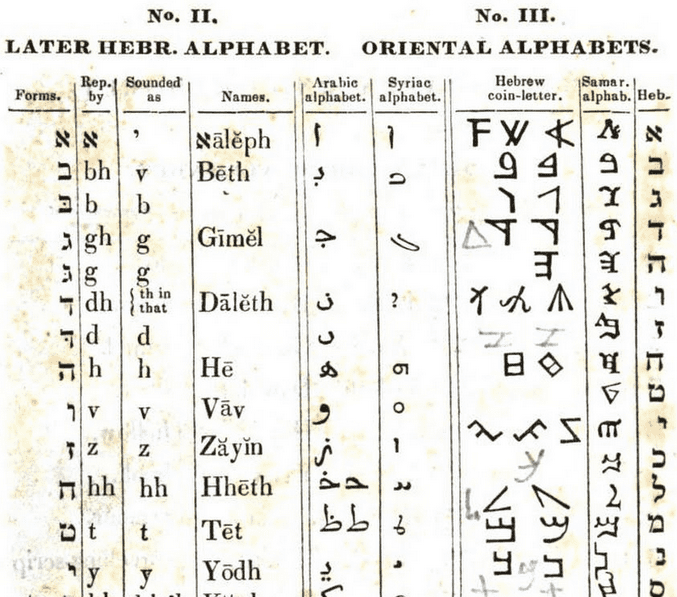Even wonder what the probability is that a given chiasmus occurred by chance rather than design? A new publication applies careful statistical analysis to help resolve this issue. The work is Boyd F. Edwards and W. Farrell Edwards, “Does Chiasmus Appear in the Book of Mormon by Chance?,” BYU Studies, Vol. 43, no. 2, pp. 103-130 (2004). The entire article and many supplementary materials – including software for you to explore the statistics of chiasmus yourself – are also available online at http://byustudies.byu.edu/chiasmus/.
The authors find that some often-cited examples of chiasmus in the Book of Abraham and the Doctrine and Covenants are likely to be due to chance, but several well-known examples of chiasmus in the Book of Mormon appear to be intentional with a high level of confidence. They take into account factors that have been used to suggest that Book of Mormon chiasmus was accidental, and apply what appears to be a fair and reasonable approach. They also provide useful background information and other insights. Well worth reading!
Naturally, I have updated my page on chiasmus in the Book of Mormon to include links to the work of Edwards and Edwards.
A final note: by providing the software they used in their study, the authors imply that they aren’t afraid to have others check out their approach in detail. I would love to hear your results if you take up the challenge.











I have some information to add for those interested in chiasmus in the Book of Mormon. The following is taken from my Web Page at
http://uk.geocities.com/irishlds87/linguist.html:
Chiasmus
Packham claims that chiasmus in the Book of Mormon is not real evidence at all, as chiamsus can appear in English writings. He uses “Green eggs and ham” and writings by LDS leaders to demonstrate this. Nonethless, he is grossly mistaken. It is rare and sporadic for English writings to have any more than a 3×3 or 4×4 chiastic pattern. The Book of Mormon has often much larger and extensive “text-book” examples of chiasmus.
As a demonstration of the weaknesses in his position, here is an e-mail correspondence with someone who brought up a similar criticism:
Regarding chiasmus, as the Book of Mormon is so wordy (as noted by Mark Twain in “Roughing it” where he said it was “chloroform in print”), wouldn’t examples of chiasmus be expected to crop up due to repetition? I refer to this page for example:
http://www.lds-mormon.com/chiasm.shtml.
Here a post on chiasmus from ARM [alt.religion.mormon] is replicated that demonstrates that the examples of chiasmus cited by Mormon apologists sich [sic] as Jeff Lindsay (e.g. Alma 36) is not really evidence at all and can occur in any publication (see the end of the page for an example of this occurance)
The Reply:
You raise an interesting question regarding chiasmus. The problem is one of misunderstanding. Many, like your author of the LDS-Mormon.com article, interpret chiasmus as merely a repetition of words. As one anti-Mormon author stated, “What’s so big about chiasmus, I can find chiasmus on every page of the phone book.” But, the mere repetition of words in a stylistic sequence would not be chiastic, unless those words were the only ones used.
The LDS-Mormon.com author uses as his example John Welch’s treatment of Alma 36 (well, that’s what he says he is using, he just leaves out John Welch’s treatment of chiasmus). First, he implies that Welch is using some simplified definition of chiasmus that the experts in the field would not accept. John Welch is the expert in this field. He is the author of “Chiasmus in Antiquity” (Hildesheim:Gerstenberg, 1981), which is the text used by most every University course which treats the subject. Welch does provide an “overview of the chiastic structure” of Alma 36 which approximates what is given in LDS-Mormon.com; however, Think has, in most cases, stripped it of all but a word or phrase from of the outline phrases. Welch refers to this outline as the “main girders” of the chiastic structure. That outline is the easiest to present and my presentation provides little beyond that outline. However, That outline (and not just LDS-Mormon’s list of words) represent only level one of Welch’s six level analysis of this chiasmus. That analysis (“Rediscovering the Book of Mormon,” Chapter 11, pp 114-131) includes:
Level 2) The full text of Alma 36, in which the full text is divided into 24 chiastically related segments (12-paired sections). Here he demonstrates a complex structure within each segment and describes a very deft linkage from each segment to the next (note that this 12 step chiastic structure is different that the 17 step outline, but it is related to and closely tied to that outline).
Level 3) Detailed relations between the paired sections: Here Welch amplifies on the relationship between the pairs. Yes, there are common words, but more importantly there are related concepts; the pairs either contrasting or amplifying one another.
Level 4) Weaving factors: The sections are not disjoint, but flow naturally; the ending words of each section providing a natural connection with the next section.
Level 5) Degree of Chiastic: Now Welch gets somewhat complex as the professor (he is a professor of Jurisprudence in the BYU School of Law) proceeds to measure this chiasmus against twelve criterion of chiastic quality: Objectivity; Purpose, climax, and centrality; Boundaries; Length; Density and dominance; Mavericks and random repetition; Balance; Return; Stylistic compatibility; Aesthetics; Setting; and Internationality. In each of these criterions this expert finds that Alma 36 rates as one of the very best of all known examples of chiastic structure.
Level 6) Comparison of form and style: This is a comparison of other examples of the same writer’s work, particularly on the same subject. It is principally a further investigation of the last of these chiastic criterion and arguable the most significant, “internationality.” Welch compares two other instances in the Book of Mormon where Alma tells of this same experience. He demonstrates that, while common expressions appear in each of these telling, there is no hint of a chiastic or other formal structure in either of these other presentations. In other words, this was not “just the way the man writes.” Rather, it suggests a significant and wilful departure from his normal expression. At the same time, there are several other example of chiastic writing by Alma. Each having its own unique form and structure.
Dr. Welch, the expert on chiastic structure, concludes that Alma 36 ranks with the very best examples of chiasm that have been found anywhere in world literature. It is definitely not a coincidental relationship existing between common words and phrases. It is a very carefully crafted literary work, which demonstrates a very sophisticated familiarity with this ancient form of literary expression.
The author of the ARM post is right. Joseph Smith had no idea that this structure was there. There may have been no one in America at that time that had even heard of chiasmus. The first book in English on the subject was not printed until the 1860s. That book, and a book in German, published in the early 1800s, demonstrated the existence of chiasmus in the Hebrew text of the Old Testament. Very few of these example are apparent in the English translation (Leviticus 24:13-23 is the most striking exception). This makes the chiastic structures of the Book of Mormon even more remarkable. Not only did Alma produce remarkable examples of chiastic writing, Joseph Smith, knowing nothing of chiasmus, preserved that structure in his translation. I see this as clear testimony that Joseph was only dictating to Oliver those words that were given him by the Lord. The Lord was the translator; Joseph was little more than the receptor and voice in that most exquisite process.
Bottom Line: Critics cannot depreciate the examples of chiasmus as hand waving on the human minds ability to find patterns or mere repetition of words. The examples of chiasmus found in the Book of Mormon are compelling indications that the authors of the text had a Semitic background and rules out the book as a product of a 19th century environment.
(P.S. my new blog can be located at http://ldsireland.blogspot.com. Feel free to visit and post comments, though my work there will be spasmodic).
I thought I’d comment on something I noticed while reading the Book of Mormon out loud.
Whenever the editor breaks from summarizing and goes to quoting, he is usually quoting poetry. Then he goes back to summaries. Sometimes not, but most of the stuff is poetry.
Want to know why S. the Lamanite wasn’t recorded more? Read his stuff outloud. The style is what we jokingly call “brute force chiasmus” and it just didn’t meet contemporaneous literary requirements. Obviously no one felt like explaining that to Christ when he asked why parts were missing.
Anyway, the details are interesting, enjoyed your post.